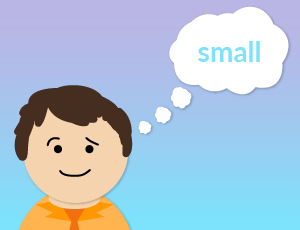[fusion_builder_container hundred_percent=”no” hundred_percent_height=”no” hundred_percent_height_scroll=”no” hundred_percent_height_center_content=”yes” equal_height_columns=”no” menu_anchor=”” hide_on_mobile=”small-visibility,medium-visibility,large-visibility” class=”” id=”” background_color=”” background_image=”” background_position=”center center” background_repeat=”no-repeat” fade=”no” background_parallax=”none” enable_mobile=”no” parallax_speed=”0.3″ video_mp4=”” video_webm=”” video_ogv=”” video_url=”” video_aspect_ratio=”16:9″ video_loop=”yes” video_mute=”yes” video_preview_image=”” border_size=”” border_color=”” border_style=”solid” margin_top=”” margin_bottom=”” padding_top=”” padding_right=”” padding_bottom=”” padding_left=””][fusion_builder_row][fusion_builder_column type=”1_1″ layout=”1_1″ spacing=”” center_content=”no” link=”” target=”_self” min_height=”” hide_on_mobile=”small-visibility,medium-visibility,large-visibility” class=”” id=”” background_color=”” background_image=”” background_position=”left top” background_repeat=”no-repeat” hover_type=”none” border_size=”0″ border_color=”” border_style=”solid” border_position=”all” padding=”” dimension_margin=”” animation_type=”” animation_direction=”left” animation_speed=”0.3″ animation_offset=”” last=”no”][fusion_text]
What is it?
“Workplace burnout.” It’s a phrase often tossed around, and its prevalence is trending steadily upward. The World Health Organization has upgraded it from a “state” to an “occupational phenomenon” in the 11th revision of the International Classification of Diseases, and committed to developing scientifically-backed guidelines for the improvement of mental health in the workplace.
While not currently recognized as a medical condition, burnout is more than just a bad day or exhaustion: BuzzFeed News Reporter Anne Helen Peterson explains that “exhaustion means going to the point where you can’t go any further; burnout means reaching that point and pushing yourself to keep going, whether for days or weeks or years.” Psychoanalyst Josh Cohen writes, “You feel burnout when you’ve exhausted all your internal resources, yet cannot free yourself of the nervous compulsion to go on regardless.”
Despite labor laws intended to guarantee a range of benefits for employees—including but not limited to safe working conditions, paid vacation time, various kinds of leave, overtime pay, and harassment protection—data shows that an increasing number of employees are experiencing these chronic feelings of fatigue, cynicism, and helplessness.
Whom does it affect?
Overachievers and high performers are especially prone to burnout, but it can also affect those bored by redundant tasks and lack of stimulation. Millennials experience burnout at higher rates than older generations, perhaps due to the pressure of “hustle culture” and the premium value they place on purposeful work and feedback. In a 2018 study, Gallup surveyed 7,500 full-time employees and found that 67% felt burned out at least sometimes. The study determined five main causes of burnout:
- unfair treatment at work
- an unmanageable workload
- lack of role clarity
- lack of communication and support from [one’s] manager
- unreasonable time pressure
[/fusion_text][fusion_imageframe image_id=”47713″ style_type=”none” stylecolor=”” hover_type=”none” bordersize=”” bordercolor=”” borderradius=”” align=”none” lightbox=”no” gallery_id=”” lightbox_image=”” alt=”” link=”” linktarget=”_self” hide_on_mobile=”small-visibility,medium-visibility,large-visibility” class=”” id=”” animation_type=”” animation_direction=”left” animation_speed=”0.3″ animation_offset=””]https://www.centurybizsolutions.net/wp-content/uploads/2019/08/Prevalence-of-burnout.png[/fusion_imageframe][fusion_imageframe image_id=”47707″ style_type=”none” stylecolor=”” hover_type=”none” bordersize=”” bordercolor=”” borderradius=”” align=”none” lightbox=”no” gallery_id=”” lightbox_image=”” alt=”” link=”” linktarget=”_self” hide_on_mobile=”small-visibility,medium-visibility,large-visibility” class=”” id=”” animation_type=”” animation_direction=”left” animation_speed=”0.3″ animation_offset=””]https://www.centurybizsolutions.net/wp-content/uploads/2019/08/Burnt-out-employees-400×327.png[/fusion_imageframe][fusion_text]
The resulting stress can manifest in a variety of ways, such as reduced job performance, irritability, insomnia, headaches, chest pain, inability to concentrate, disengagement, and more frequent illness.
If left untreated, burnout can lead to alcoholism, unhealthy eating patterns, crippling self-doubt, cardiovascular disease, gastrointestinal issues, high blood pressure, and Type 2 diabetes, among other ailments.
Why is it so prevalent?
Millennials in particular face a unique set of challenges introduced by the constant push for optimization. Technology has streamlined business practices, enhancing efficiency and profit-turning, and millennials feel immense pressure not only to keep up, but to continually reinvent themselves as the best workers possible. Digital and social media compound this pressure, by blurring the lines between work and life with nonstop connectivity and by creating an environment that breeds competition.
In the age of hustle, no one wants to look like they aren’t working as hard or accomplishing as much as their peers.
Managers, while often subject to burnout themselves if they are unable to delegate effectively or trust their team to perform well in their absence, often remain unaware of their employees’ disillusionment. Even if they recognize the signs, they rarely take the actions that could prevent devastating long-term effects. A burnt-out employee might be driven to quit his job when a simple reassignment or reduction in workload would have sufficiently reanimated him.
I’m burnt out—what happens now?
As with any recovery process, the first step is admitting the problem. That often requires recognizing the lies that keep you trapped in the hamster wheel.
“Everything will slow down and I’ll catch up once I finish this project.”
“I have to say yes or I might miss out on a career-boosting opportunity.”
“No one else can do this as well as I can.”
Recovery is possible, but it takes time. A week-long vacation won’t reverse the effects of chronic stress, and quitting your job probably isn’t the ticket either. Combating burnout requires active change in both your attitude and your workload, says Dr. Alice Domar, Director of the Domar Center for Mind/Body Health.
[/fusion_text][fusion_imageframe image_id=”47708″ style_type=”none” stylecolor=”” hover_type=”none” bordersize=”” bordercolor=”” borderradius=”” align=”none” lightbox=”no” gallery_id=”” lightbox_image=”” alt=”” link=”” linktarget=”_self” hide_on_mobile=”small-visibility,medium-visibility,large-visibility” class=”” id=”” animation_type=”” animation_direction=”left” animation_speed=”0.3″ animation_offset=””]https://www.centurybizsolutions.net/wp-content/uploads/2019/08/beach-600×400.jpg[/fusion_imageframe][fusion_separator style_type=”none” hide_on_mobile=”small-visibility,medium-visibility,large-visibility” class=”” id=”” sep_color=”” top_margin=”12″ bottom_margin=”” border_size=”” icon=”” icon_circle=”” icon_circle_color=”” width=”” alignment=”center” /][fusion_text]
Practicing intentional self-care can encourage an attitude shift. Some strategies include:
- reducing alcohol and caffeine consumption
- eating a balanced diet
- getting regular exercise and exposure to sunlight
- prioritizing sufficient sleep
- finding a hobby or creative outlet
- meditating and learning mindfulness
Counselling and/or medication may be helpful in conjunction with these practices. Once physical needs are met, the next step is focusing on your relationship to the space and the people around you by practicing gratitude, creating relaxing spaces, staying organized, removing negative content from your social media feeds, investing in the people close to you, and setting reasonable priorities for given increments of time.
Adjusting your workload will likely entail a conversation with your manager about clearly-defined boundaries, more frequent breaks, tangible and realistic expectations, better utilization of strengths, and ways to cultivate a more supportive environment.
[/fusion_text][fusion_imageframe image_id=”47709″ style_type=”none” stylecolor=”” hover_type=”none” bordersize=”” bordercolor=”” borderradius=”” align=”none” lightbox=”no” gallery_id=”” lightbox_image=”” alt=”” link=”” linktarget=”_self” hide_on_mobile=”small-visibility,medium-visibility,large-visibility” class=”” id=”” animation_type=”” animation_direction=”left” animation_speed=”0.3″ animation_offset=””]https://www.centurybizsolutions.net/wp-content/uploads/2019/08/teamwork-600×401.jpeg[/fusion_imageframe][fusion_separator style_type=”none” hide_on_mobile=”small-visibility,medium-visibility,large-visibility” class=”” id=”” sep_color=”” top_margin=”12″ bottom_margin=”” border_size=”” icon=”” icon_circle=”” icon_circle_color=”” width=”” alignment=”center” /][fusion_text]
Conclusion
Work is an essential part of life, but it shouldn’t take over every aspect of it. It is not the source of your identity and it isn’t worth sacrificing your personal wellbeing for. If you’re experiencing symptoms of burnout, you have an opportunity to explore the potential to incorporate more aspects of your personality and strengths into your job. How can you be more creative? In what ways could you leverage your role to better serve others? Start the conversation! Your teammates may be experiencing similar frustrations. By speaking up, you could be the catalyst for positive change in your work environment that benefits your whole team.
[/fusion_text][/fusion_builder_column][/fusion_builder_row][/fusion_builder_container]





